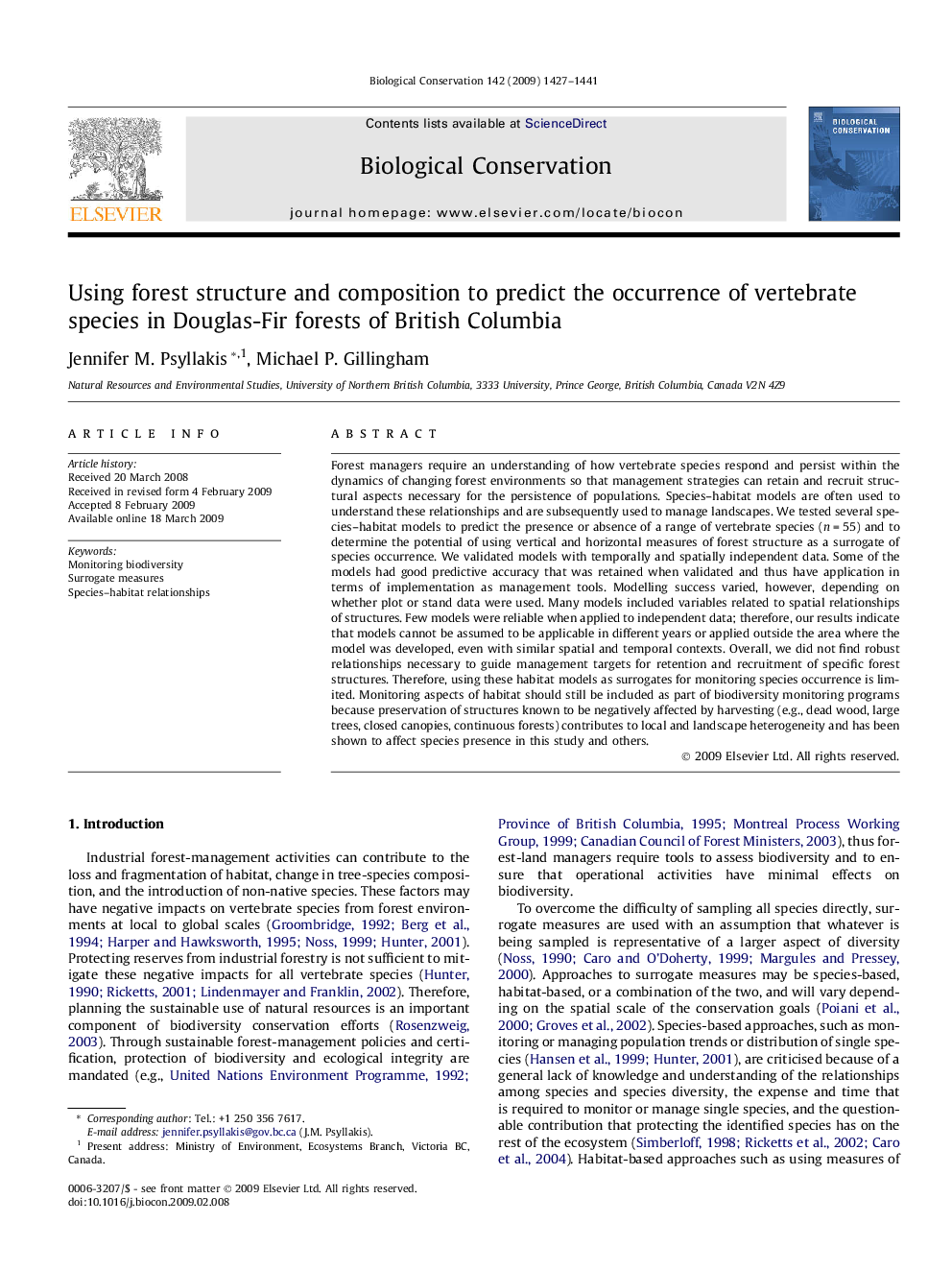| Article ID | Journal | Published Year | Pages | File Type |
|---|---|---|---|---|
| 4386476 | Biological Conservation | 2009 | 15 Pages |
Abstract
Forest managers require an understanding of how vertebrate species respond and persist within the dynamics of changing forest environments so that management strategies can retain and recruit structural aspects necessary for the persistence of populations. Species-habitat models are often used to understand these relationships and are subsequently used to manage landscapes. We tested several species-habitat models to predict the presence or absence of a range of vertebrate species (n = 55) and to determine the potential of using vertical and horizontal measures of forest structure as a surrogate of species occurrence. We validated models with temporally and spatially independent data. Some of the models had good predictive accuracy that was retained when validated and thus have application in terms of implementation as management tools. Modelling success varied, however, depending on whether plot or stand data were used. Many models included variables related to spatial relationships of structures. Few models were reliable when applied to independent data; therefore, our results indicate that models cannot be assumed to be applicable in different years or applied outside the area where the model was developed, even with similar spatial and temporal contexts. Overall, we did not find robust relationships necessary to guide management targets for retention and recruitment of specific forest structures. Therefore, using these habitat models as surrogates for monitoring species occurrence is limited. Monitoring aspects of habitat should still be included as part of biodiversity monitoring programs because preservation of structures known to be negatively affected by harvesting (e.g., dead wood, large trees, closed canopies, continuous forests) contributes to local and landscape heterogeneity and has been shown to affect species presence in this study and others.
Keywords
Related Topics
Life Sciences
Agricultural and Biological Sciences
Ecology, Evolution, Behavior and Systematics
Authors
Jennifer M. Psyllakis, Michael P. Gillingham,
